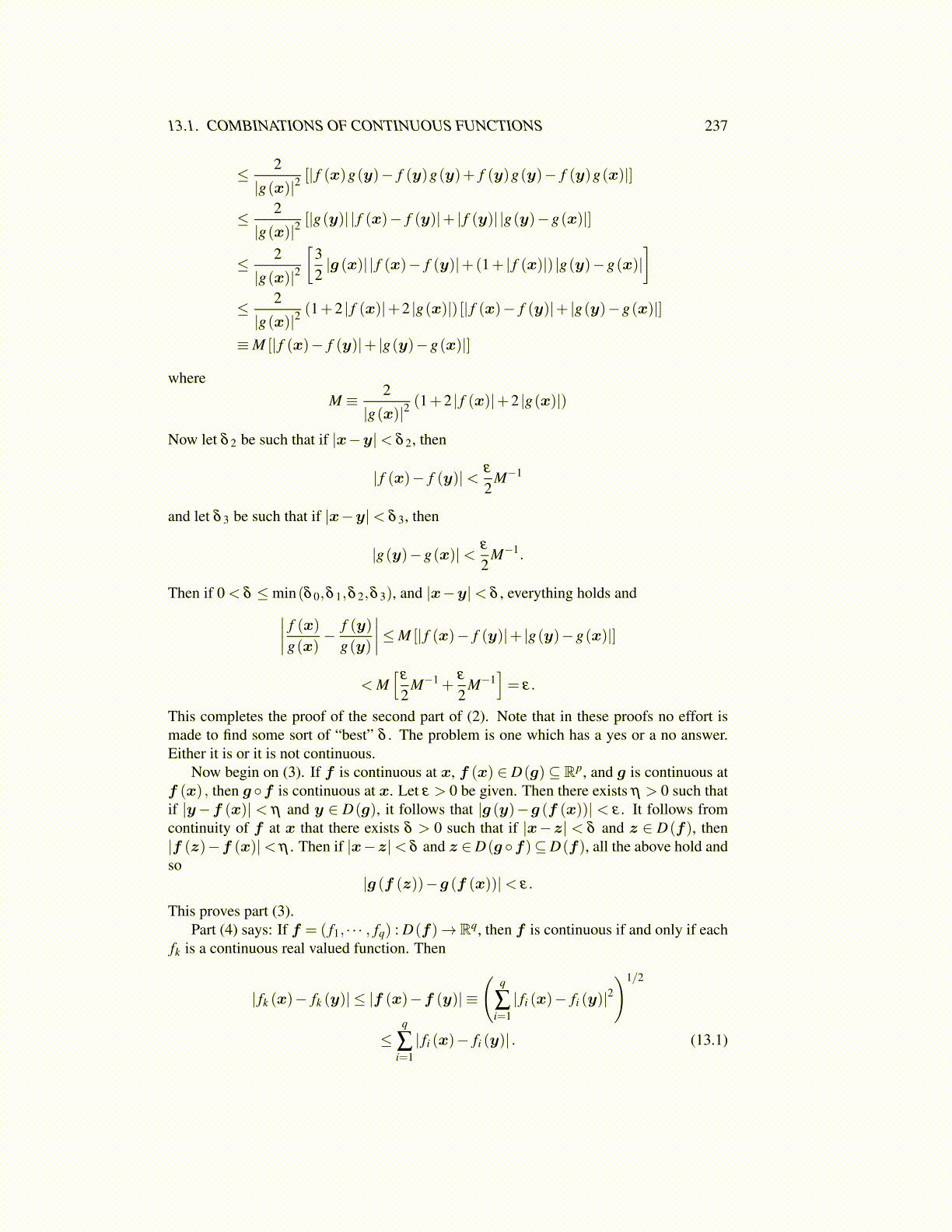
13.1. COMBINATIONS OF CONTINUOUS FUNCTIONS 237
≤ 2
|g(x)|2[| f (x)g(y)− f (y)g(y)+ f (y)g(y)− f (y)g(x)|]
≤ 2
|g(x)|2[|g(y)| | f (x)− f (y)|+ | f (y)| |g(y)−g(x)|]
≤ 2
|g(x)|2
[32|g (x)| | f (x)− f (y)|+(1+ | f (x)|) |g(y)−g(x)|
]≤ 2
|g(x)|2(1+2 | f (x)|+2 |g(x)|) [| f (x)− f (y)|+ |g(y)−g(x)|]
≡M [| f (x)− f (y)|+ |g(y)−g(x)|]
whereM ≡ 2
|g(x)|2(1+2 | f (x)|+2 |g(x)|)
Now let δ 2 be such that if |x−y|< δ 2, then
| f (x)− f (y)|< ε
2M−1
and let δ 3 be such that if |x−y|< δ 3, then
|g(y)−g(x)|< ε
2M−1.
Then if 0 < δ ≤min(δ 0,δ 1,δ 2,δ 3), and |x−y|< δ , everything holds and∣∣∣∣ f (x)g(x)
− f (y)g(y)
∣∣∣∣≤M [| f (x)− f (y)|+ |g(y)−g(x)|]
< M[
ε
2M−1 +
ε
2M−1
]= ε.
This completes the proof of the second part of (2). Note that in these proofs no effort ismade to find some sort of “best” δ . The problem is one which has a yes or a no answer.Either it is or it is not continuous.
Now begin on (3). If f is continuous at x, f (x) ∈ D(g)⊆ Rp, and g is continuous atf (x) , then g ◦f is continuous at x. Let ε > 0 be given. Then there exists η > 0 such thatif |y−f (x)| < η and y ∈ D(g), it follows that |g (y)−g (f (x))| < ε . It follows fromcontinuity of f at x that there exists δ > 0 such that if |x−z| < δ and z ∈ D(f), then|f (z)−f (x)|< η . Then if |x−z|< δ and z ∈D(g ◦f)⊆D(f), all the above hold andso
|g (f (z))−g (f (x))|< ε.
This proves part (3).Part (4) says: If f = ( f1, · · · , fq) : D(f)→Rq, then f is continuous if and only if each
fk is a continuous real valued function. Then
| fk (x)− fk (y)| ≤ |f (x)−f (y)| ≡
(q
∑i=1| fi (x)− fi (y)|2
)1/2
≤q
∑i=1| fi (x)− fi (y)| . (13.1)